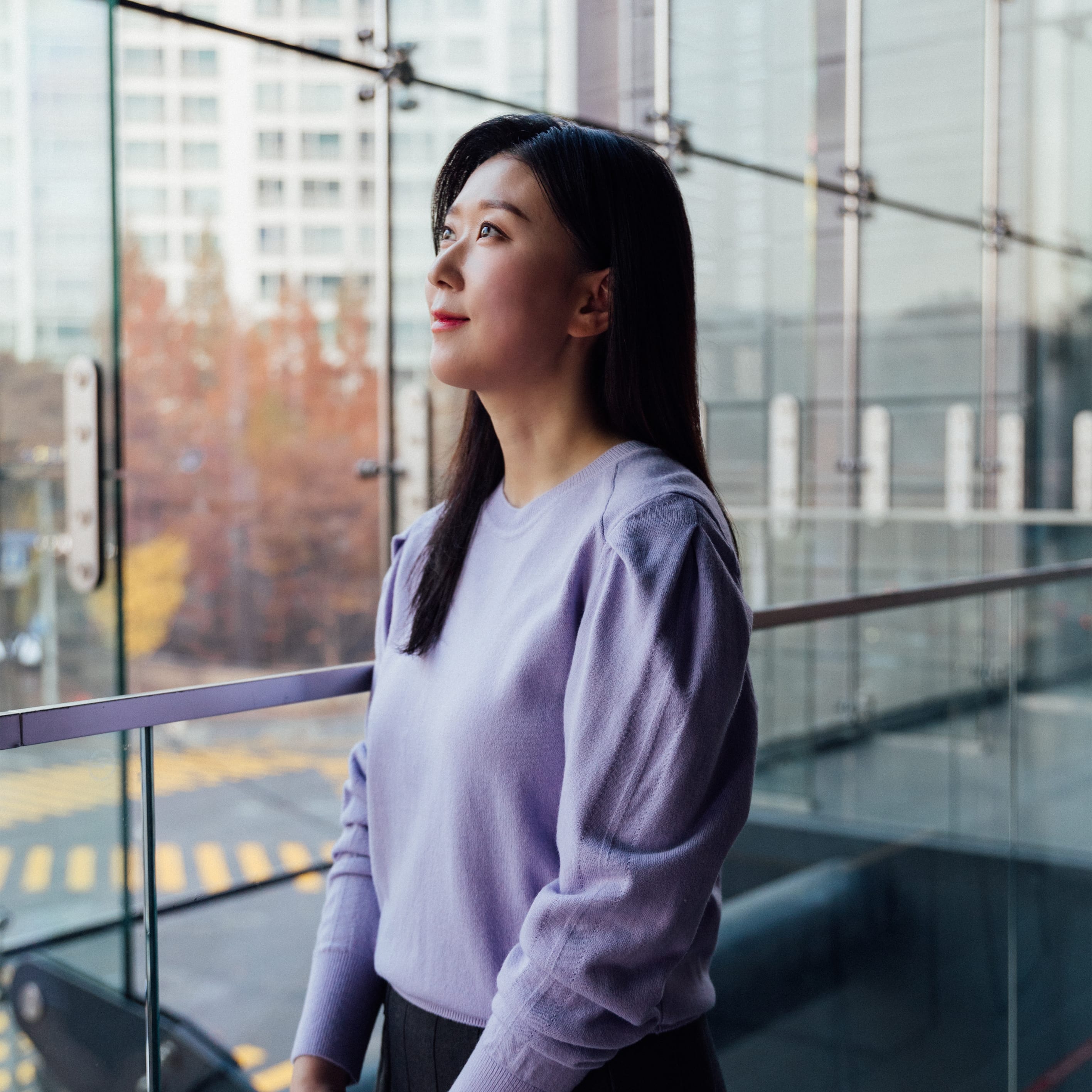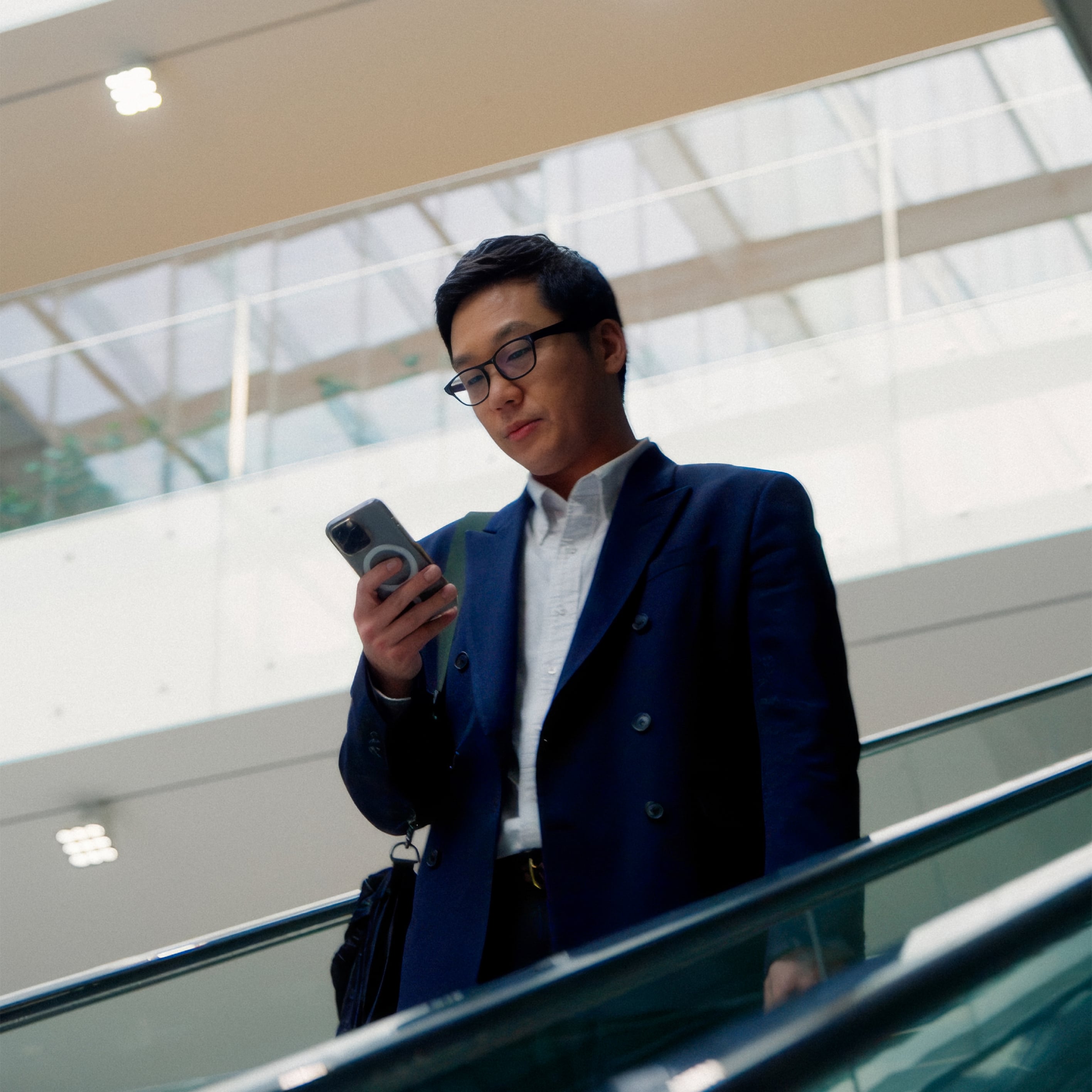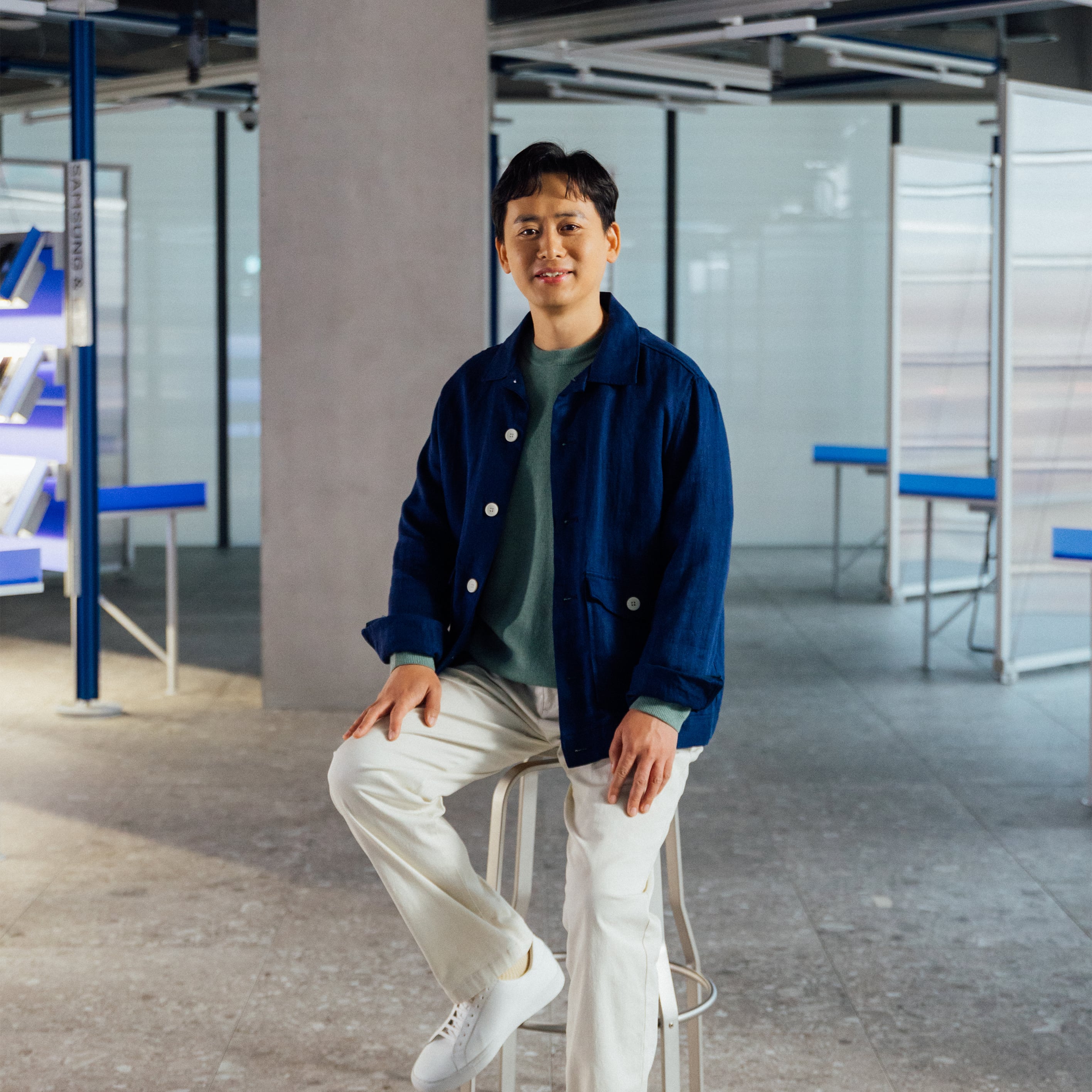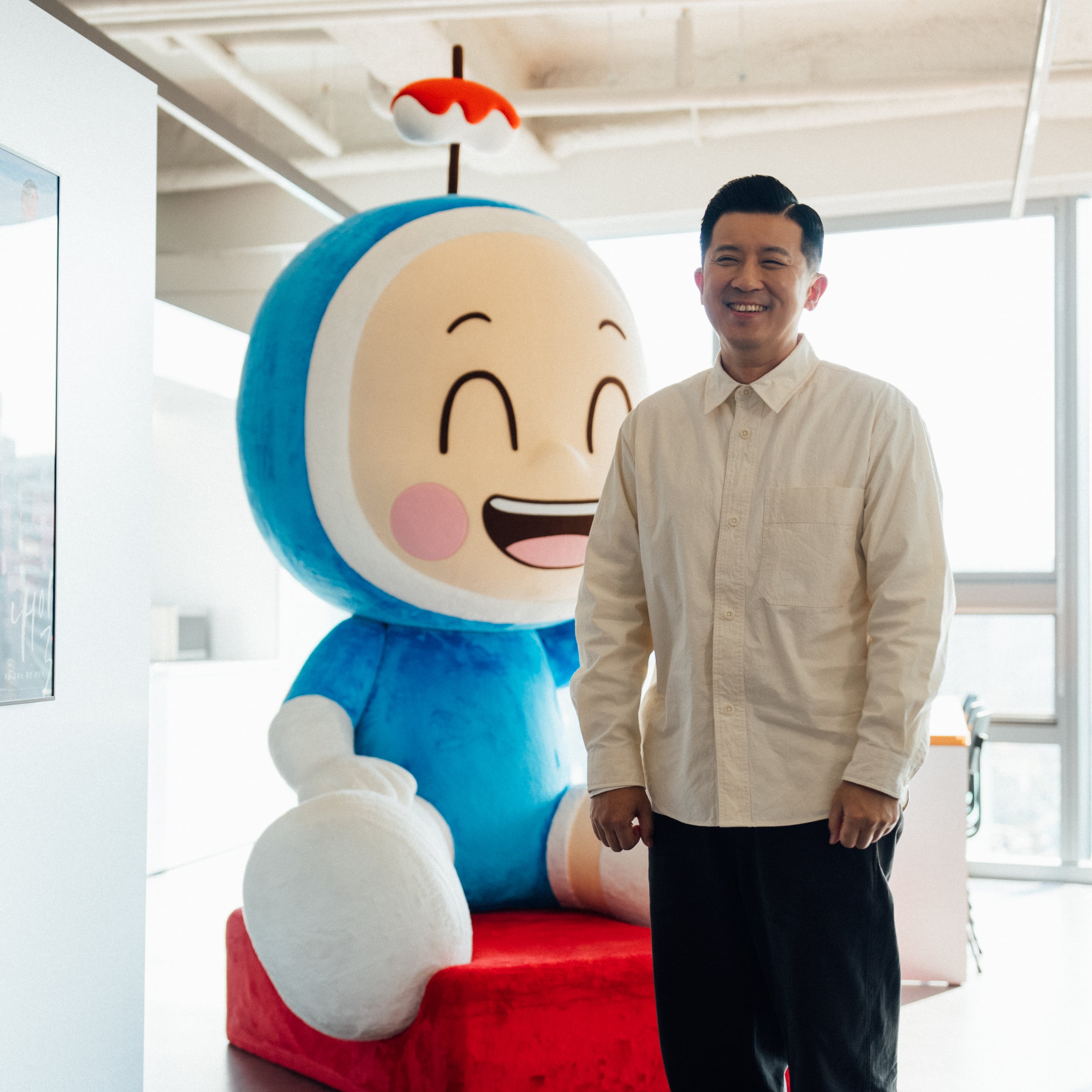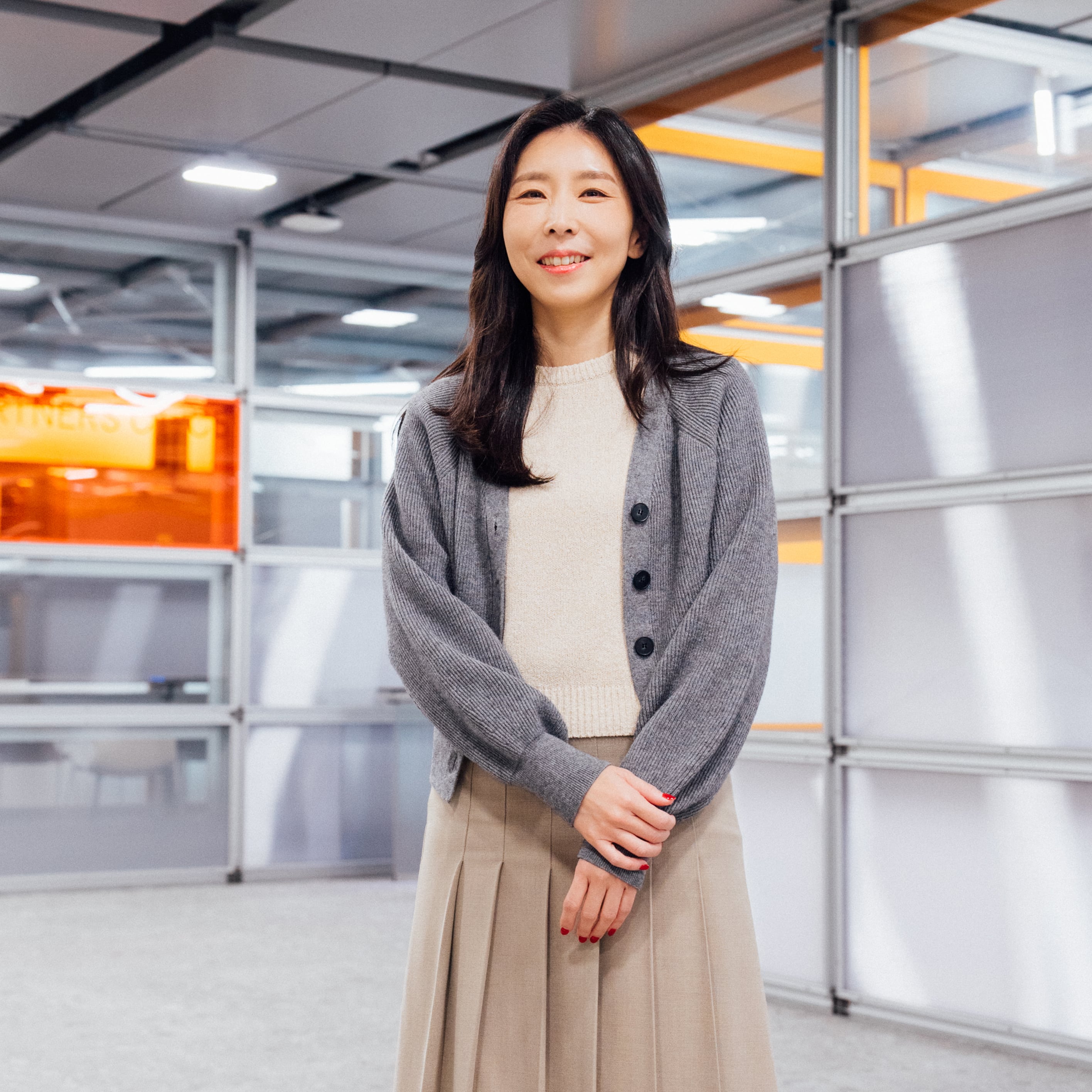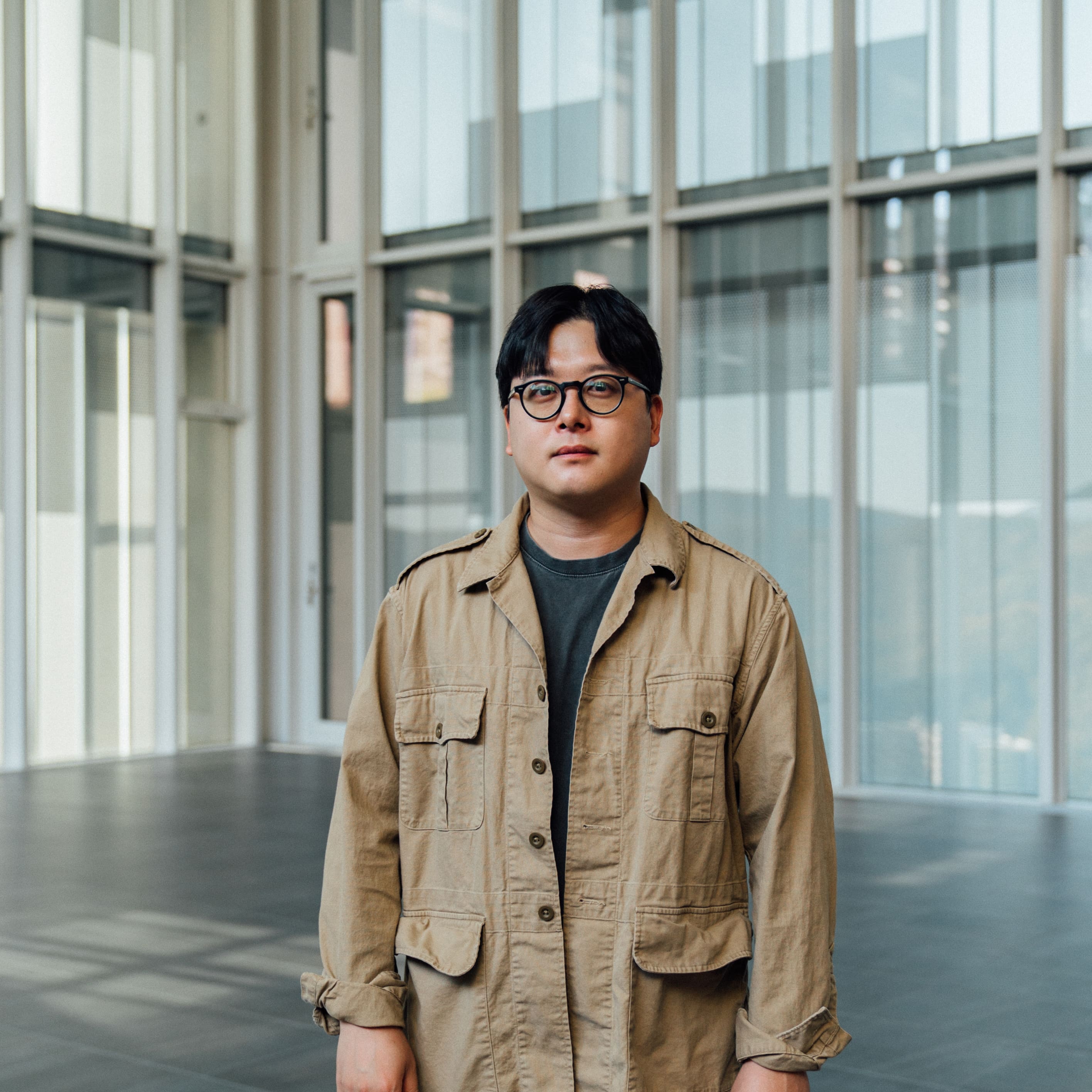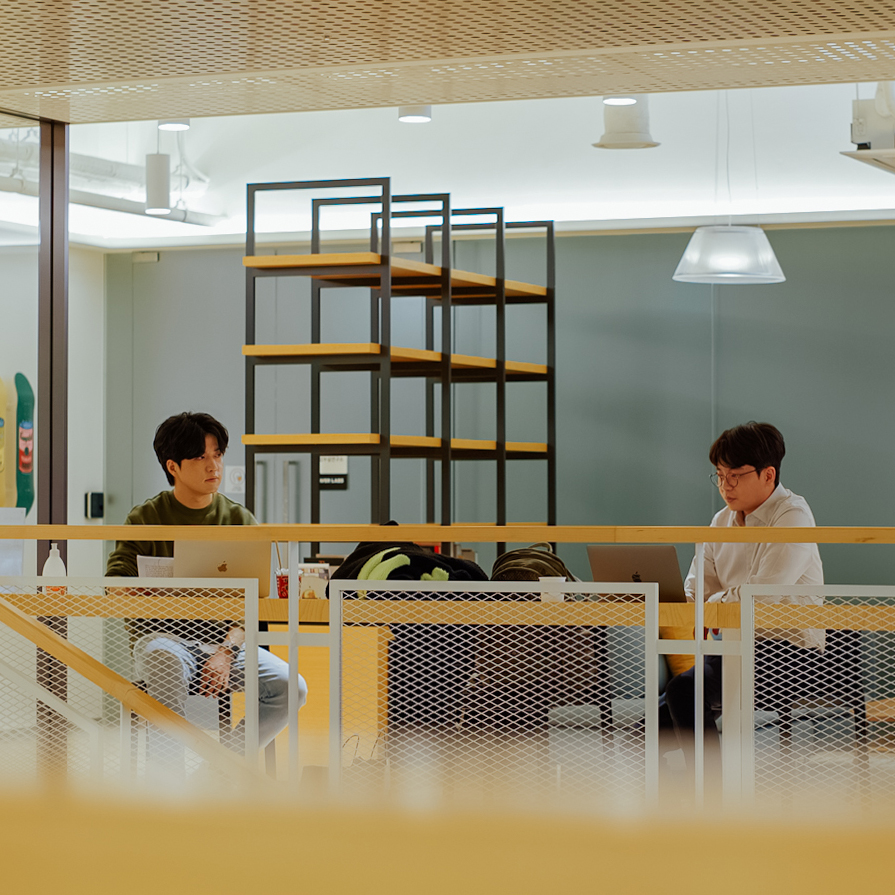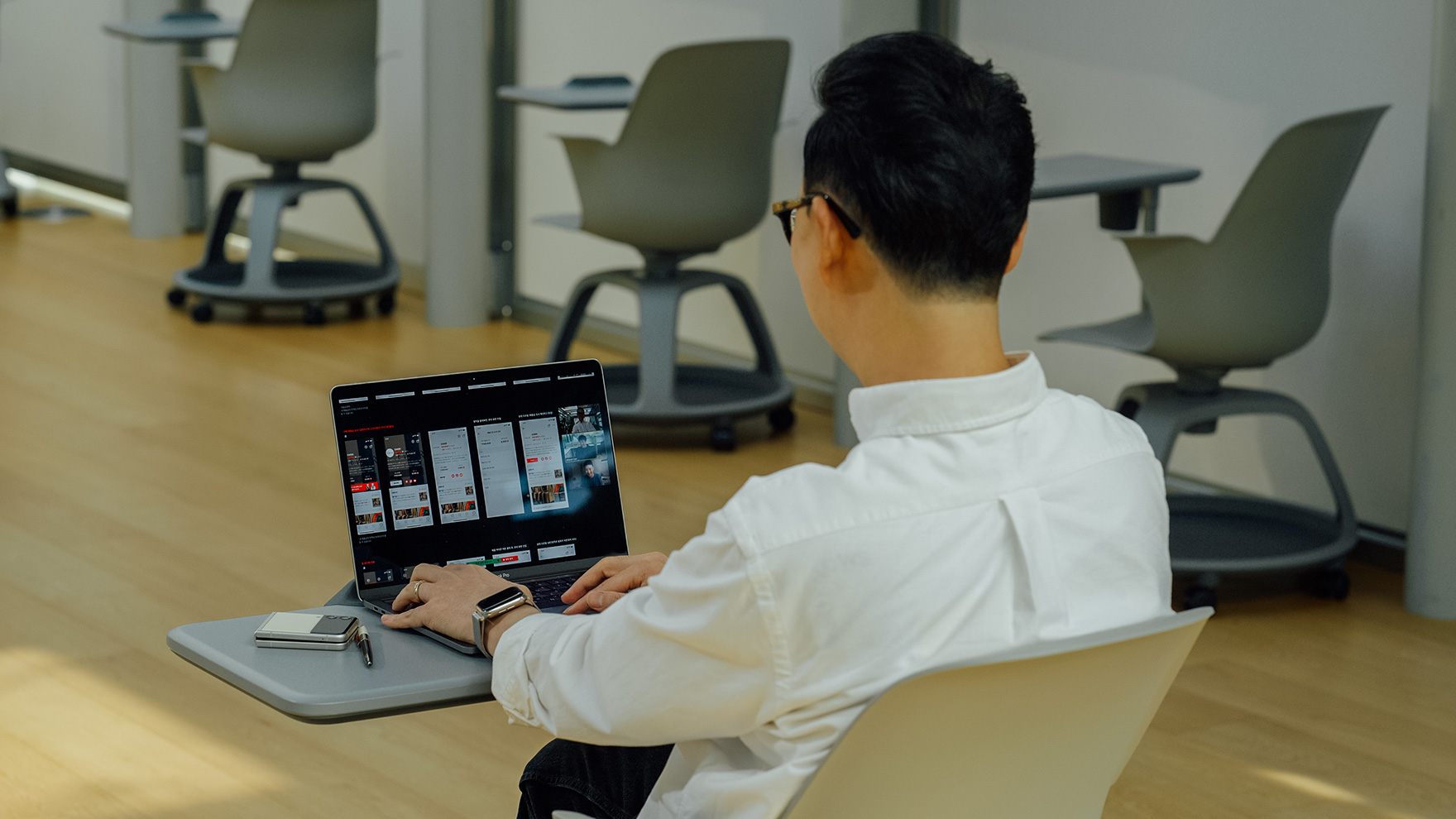
실패를 감수하는 마음
디자이너 서명원은 제품 GUI 디자이너로 커리어를 시작하여 네이버에 UI/UX 디자이너로 합류했다. 제품 디자인도 즐거웠지만, 업계 속성상 소비자의 지불 능력에 따라 다른 퀄리티를 제공하게 된다는 점에서 본질적인 아쉬움이 있었다고 한다. 그가 네이버에 만족하는 부분도 바로 그 지점에 있다. ‘정보’는 제품과 달리 사회적 지위, 경제적 능력과 무관하게 모두에게 평등하게 공유될 수 있다는 점. 지난 10년간 그는 의미 있는 정보를 제공하는 일에 자부심을 가지고, 통합 검색 개편부터, 올림픽 같은 대형 이벤트 콘텐츠 디자인, 지도 서비스 개편, AI 음성 검색, 플레이스 검색까지, 네이버 서비스의 메인이라고 할 만한 ‘검색 설계’ 디자인을 두루 진행했다.
지금 그는 스무 명 정도의 소규모 팀을 이끌며 새롭게 글로벌 프로젝트에 도전 중이다. 한국이 아닌 일본에서 먼저 론칭한 빈티지 시티(Vintage City)다. “글로벌 프로젝트는 99% 잘 되기 어렵다고들 해요. 국내에서처럼 네이버가 인지도가 있는 게 아니니 더 어렵죠.” 실패할 가능성이 크다고 말하는 한편, 앞으로 한국은 물론 유럽, 미국으로도 확장 계획을 갖고 있다는 그에게 1%는 도전해 볼 만한 유의미한 숫자다.

VC Project에서 론칭한 ‘빈티지 시티’는 전 세계적으로 성장하고 있는 중고거래 시장에 도전해 보자, 라고 해서 시작했어요. 도쿄를 중심으로 다양한 빈티지 숍과 상품을 모아서 사용자에게 소개하고 취향이 비슷한 숍을 찾아서 누구나 자유롭게 거래할 수 있는 ‘일본 최초의 빈티지 패션 EC 커뮤니티’입니다.
어느 날 유튜브를 보고 있었거든요. 어떤 인플루언서가 뉴욕 여행을 갔다 와서 빈티지 시계를 산 거를 자랑하는 영상을 올린 거예요. 근데 거기 댓글에 사람들이 ‘저 빈티지 시계 어디서 샀을까, 알려 주세요’라면서 질문을 엄청 많이 남기더라고요. 생각해 보니 주변 지인들도 예전에 도쿄 여행 갈 때마다 괜찮은 빈티지 숍을 찾아 다녔던 것 같고, 저 역시도 베를린 여행을 갔을 때 빈티지 매장을 찾아갔던 경험이 기억이 났어요. 그때부터 빈티지 숍에 대해 정보들을 찾기 시작했거든요. 각 도시에 빈티지 숍이 이렇게 많으면 정보들을 잘 모아서 우리가 뭔가 해볼 수 있지 않을까.
일본 패션 시장 규모가 글로벌 전 세계 3위인데, 패션에 특화된 빈티지 C2C 플랫폼이 없던 거예요. 일본의 빈티지 역사는 정말 엄청나거든요. 그런데 이 정보를 모아놓은 플랫폼이 없다는 건 ‘의외의 발견’이었던 거 같아요. 이 아이디어가 맨 처음에 나왔을 때 저희끼리는 조금 흥분되었던 것 같아요. 일본 최초, 세계 최초거든요. 솔직히 얘기해서. 이제 ‘최초’라는 단어를 쓸 수 있는 플랫폼은 잘 없잖아요.
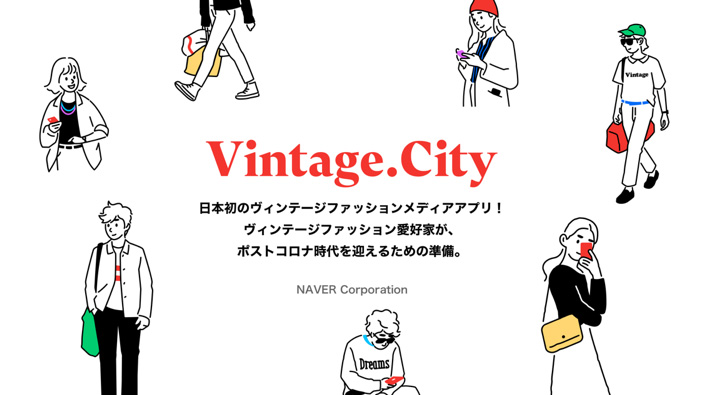
처음에 일본 LINE의 구성원들에게 검증을 받고 싶어서, 저희 아이디어를 얘기했더니 ‘아이디어는 너무 괜찮다, 근데 쉽지 않을 거다. 일본 사람들은 오프라인에 대한 경험이 너무 익숙하다 보니까, 특히 장인 정신을 가지고 운영하는 빈티지 숍은 온라인화가 쉽지 않을 거다.’ 이런 부정적인 피드백을 받았는데요. 그런데 그때 코로나 19가 터진 거죠. 빈티지 숍의 오프라인 매출이 90% 감소하면서 온라인 판매에 대한 니즈가 점점 생기기 시작했어요. 저희가 판매자 페이지를 제공하고 할인이나 이벤트 정보를 모아서 구매자와 연결해 주니 빈티지 숍들에서도 매출에 긍정적인 영향을 준다는 것을 느끼신 것 같아요. 입점하신 사업자 분이 옆 가게의 사업자 분에게 소개하기도 하고요.
“일본의 빈티지 역사가 엄청난데, 그 정보를 모아 놓은 플랫폼이 없다는 건
‘의외의 발견’이었던 것 같아요. 솔직히 이건 세계 최초거든요.”
빈티지 시티는 네이버의 사업이지만, 일본에서 라인의 지원 없이 스타트업의 형태로 운영해 나가고 있어요. 일본에서는 네이버라고 하면 사람들이 잘 모르거든요. 그럼에도 불구하고 22년 4월 기준 82만 다운로드를 달성했고, 저희가 처음에 도쿄에서만 41개의 빈티지 숍으로 오픈했는데 현재는 오사카, 교토 등 일본의 도도부현 47개 전 지역에서 394개의 빈티지 숍이 입점했어요. 일본의 경우 전국의 점포를 확보하는 일은 매우 어렵다고 해요. 예를 들어 유니클로, 스타벅스와 같은 대형 사업자도 전국 47개 지역에 지점을 모두 갖추는 데 수십년이 걸렸다고 하거든요. 온라인이긴 하지만 일본의 전 지역에서 숍이 입점한 것은 의미 있는 일이라고 생각해요.
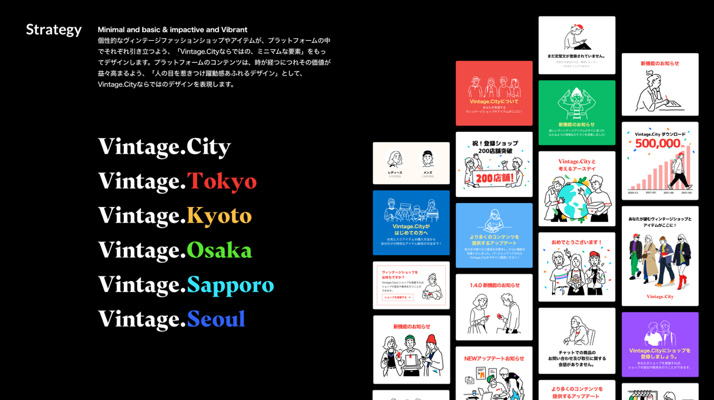
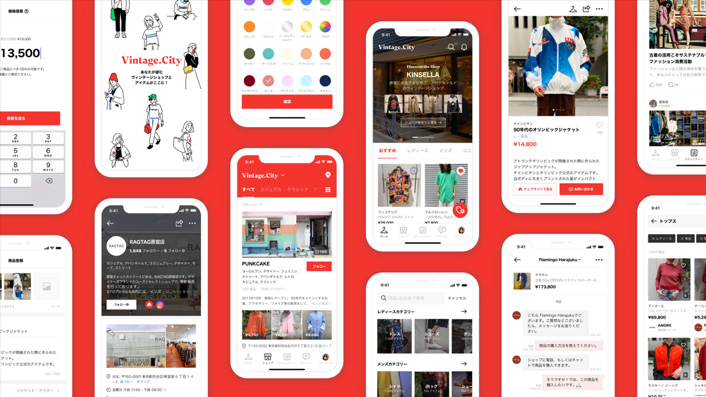
그리고 저희가 일본에 론칭한 신규 플랫폼이다 보니까, 일본 사용자들에게 PR하는 것도 너무 절박했고 사용자들에게 뭔가 신뢰감을 줘야 됐어요. 그래서 일본에서 주관하는 GOOD DESIGN AWARD 2021에 지원을 했는데, 감사하게도 본상을 수상하게 됐어요. 수상작에게는 G마크가 부여되는데, 일본 사용자들에게 G마크가 부착된 서비스는 매력적이고, 사용자 친화적이며, 고품질의 제품’으로 인식되고 있어요.
14년이라는 시간 동안 디자이너로서, 디자인만 해오다 보니 프로젝트를 준비하고 론칭하고, 운영하며 ‘결제’와 같은 기능을 붙이는 업무는 쉬운 일이 아니었어요. 초기에 팀이 세팅되었을 때 사내에서도 ‘과연 오픈이라도 할 수 있겠어?’라는 우려의 시선도 많았어요. 그럴 때마다 커머스 유관부서 및 계약 부서, 법무 담당자 분들을 엄청 찾아다녔던 것 같아요. 물론 지금도요.
그리고 개인적으로는 프로젝트를 론칭하고, 성과를 만들어 내는 것도 중요하지만, 함께 일하는 구성원들에게 신뢰감을 주는 것이 정말 중요했던 것 같아요.
빈티지 시티를 론칭하고 나서 잠깐 시련이 있었어요. 저희 같은 경우는 워낙 소규모로 조용히 일을 하다 보니까 저희가 진행하는 일들에 대해서 전사 사업 방향성 차원에서 한번 정리가 좀 필요했던 거 같아요. 열심히 론칭해서 운영하고 있었는데 갑자기 서비스를 접어야 할 수도 있다, 라는 이야기를 듣게 된 거죠.
이 프로젝트를 같이 리드하고 계시는 기획 파트, 개발 파트 분들하고 얘기를 했어요. 우리가 지금까지 했던 게 아쉬워서 더 하려고 하는 건 아닌가? 진짜 우리가 하는 플랫폼이 진짜로 사용자를 이롭게 하고 정말 최초로서 의미 있는 경험을 제공하는 게 맞나? 이런 얘기를 나눴는데, 결론은 한번 해볼 만한 플랫폼이다, 였어요.
그래서 의사결정을 할 수 있는 분들에게 마지막으로 보고를 하고 싶다고 메일을 보냈어요. 그러고 나서 한동안 메일 회신이 없다가 짧게 메일이 왔거든요. 아직도 잊을 수가 없는데 ‘미팅 한번 합시다’라고 회신이 와서 준비를 잘 해서 미팅을 들어갔어요. 요즘 같은 시대에 기존에 없던 ‘최초’라는 단어를 사용할 수 있는 플랫폼이라는 점을 최대한 어필했어요. 이런 절실함이 통했는지 모르겠지만, 다행히 그때 우리가 하는 일이 가능성이 있다는 점이 설득되어서 현재까지 운영을 잘 해나가고 있습니다.
“저는 책임감으로 시작한 일도 즐거움으로 이어질 수 있다고 믿어요.”
원래의 성향도 새로운 일을 선호하시는 편이신가요.
간혹 그렇게 오해하기도 하는데요. 그건 아니고, 대부분 책임감으로 맡는 것 같아요. 어떻게 생각해 보면 저도 고생하면서 어렵게 론칭한 프로젝트를 두고 다른 신규 프로젝트로 가는 게 쉽지는 않거든요. 그런데 그럼에도 제안을 해주시면 고민하지 않고 했던 것 같아요. 왜냐하면 주니어 때부터 성장했던 것은 저한테 부여된 일이면 작은 일이든, 큰 일이든 최선을 다해서 했을 때였거든요.
네이버웹툰의 김준구 대표님을 정말 존경하고 좋아해요. 만화라는 콘텐츠에 대해 애정을 가지시고 본인이 좋아하는 일을 통해서 성공이라는 결과까지 얻었잖아요. 어떻게 보면 직장인들의 롤 모델이라고 저는 생각하거든요. 근데 대부분의 직장인들이 그렇잖아요. 좋아하는 일만 맡아서 할 수는 없거든요. 좋아하지 않는 일을 해야 되는 순간이 더 많아요. 지금 하고 있는 빈티지 시티도 마찬가지인데, 빈티지에 관심은 있었지만 그렇다고 활발하게 거래를 하는 사용자는 아니었어요. 그런데 책임감으로 하다 보면 일도 좋아질 수 있다고 저는 믿거든요. 맨 처음에 저희가 론칭을 하고 사용자가 100명밖에 없었거든요 한 달 동안. 근데 어느 순간 1천 명이 되고 1만 명이 되고, 10만 명이 되고 20만 명이 되는 경험을 하다 보니까 회사 일 중에 처음부터 즐거웠던 일이 아니더라도 책임감을 가지고 하면 즐거워질 수 있고, 성공할 수 있다는 사례가 되면 좋을 거 같다는 생각입니다.
루틴이라고 말할 수 있을지 모르겠지만, 일을 착수할 때 가치를 부여하는 일을 먼저 해요. 내가 이 일을 통해서 성장하고 얻을 수 있는 건 무엇인지, 이 일을 통해 사람들에게 가치를 줄 수 있는 게 있을지, 그리고 우리 조직의 구성원들과 함께 얻는 가치는 무엇인지, 이런 것을 먼저 생각하다 보면 힘든 순간이 오고 지칠 때 약간 동기 부여가 되는 것 같아요.
직업병까지라고 할 만한지는 모르겠지만, 저는 시간을 많이 들이는 것 같아요. 제가 대학 입시 한 6개월 전에 디자이너가 되어야겠다는 생각을 했어요. 그래서 남들보다 늦게 했으니까 열심히 더 해야 되잖아요. 미술 학원에 가면 남들이 보통 1시간 그릴 때 더 빨리 가서 더 많이 그리고 그랬거든요.
맨 처음에 실무 나와 가지고 ‘고급스러운 디자인’을 해보라는 미션이 있었어요. 블랙에 막 골드를 딱 넣어 가지고 디자인을 했거든요. 그걸 보시고 그 당시에 리더 분이 저에게 ‘명원아, 갤러리아 명품관 가서 한번 보고 와’ 하셨거든요. 그래서 주말에 가서 고급스러운 디자인이 뭔지, 고급스러운 컬러가 어떤 건지 보고 왔죠. 저 멀리 짙은 남색에 민트색을 딱 하나 찍었는데 그게 그렇게 고급스러운 거예요. 그래서 그 컬러를 외웠다가 디자인에 적용했는데 너무 반응이 좋았던 거죠. 그래서 그때부터 의미가 있는 색들이 있으면 외우기 시작했던 거 같아요. 예를 들어 일주일에 한 개, 근데 시간이 흐르면 그게 엄청난 숫자가 되거든요.
저는 컬러감이 되게 부족한 디자이너였는데 어느 순간 주변에 있는 사람들이 ‘컬러를 되게 잘 쓰네’라는 이야기를 듣는 순간들도 경험하게 된 거죠. 디자인이라는 것도 감각이 조금 부족하더라도 끈기를 가지고 꾸준히 하다 보면 단단한 디자이너로 성장할 수 있다는 생각입니다.
기존에 없던 것을 만드는 건 너무 어려운 일이 됐어요. 그런 건 이미 오래 전에 지나갔다고 생각하거든요. 제가 생각하는 요즘 시대의 크리에이티브는 갑자기 없던 것을 창조해 내는 것이 아니라, 기존의 것을 지금 시대의 시각으로 재정의하고 재해석하는 것이라고 생각하는데요. 지금 저희가 진행하는 빈티지 시티 프로젝트가 그런 크리에이티브를 잘 반영한 사례 중 하나라고 생각해요. 빈티지 숍이라는 건 기존부터 있었거든요. 그런데 의외의 빈틈을 발견해서 플랫폼으로 기획해서 오프라인의 경험을 온라인으로 이어준 거죠. 코로나19로 인하여 이동 제한이 어려워진 지금의 시대 상황을 잘 반영한 사례인 것 같습니다.
네이버에는 다양한 서비스들이 있다 보니까 새로운 서비스를 더 해봐야겠다는 갈증은 다른 회사보다는 좀 덜한 것 같아요. 한 가지 더 해보고 싶었던 것은 10년이라는 시간 동안 제가 규모가 큰 조직에서만 계속 일을 하다 보니까 스타트업과 같은 규모의 조직에서 조금 더 속도감 있고, 더 액티브하게 일해보고 싶은 니즈가 항상 있었어요.
그런데 감사하게도 지금 하고 있는 VC 프로젝트가, 스타트업 하시는 분들에게는 비할 바는 아니겠지만, 조금이나마 간접적인 경험을 할 수 있다는 측면에서 좋은 것 같아요. 더욱이 감사한 점은 네이버라는 회사의 다양한 인프라 안에서 시도해 볼 수 있다는 점인데요. 다양한 시도를 할 수 있는 환경 덕분에 실패를 두려워하지 않고 조금 더 열정적으로 일할 수 있는 것 같아요. 생각한 대로 되지 않고 계속 어려움이 많겠지만 변함없는 마음가짐으로 임한다면, 운이 찾아왔을 때 준비가 잘되어 있기 때문에 성공이란 결실을 맺을 수 있을 것이라 생각해요. 혹 실패한다고 해도, 시도해 볼 만한 가치가 있는 플랫폼이라는 생각입니다.
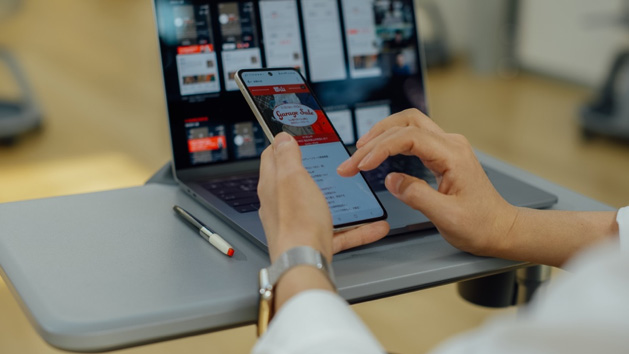
Published APR. 2022
